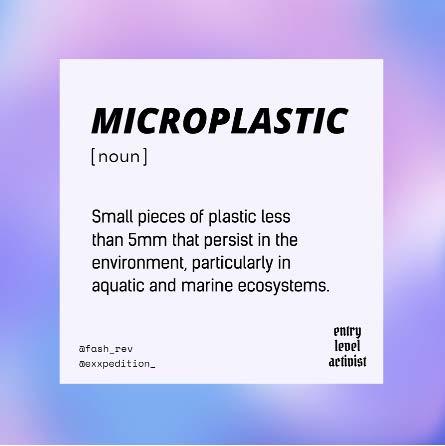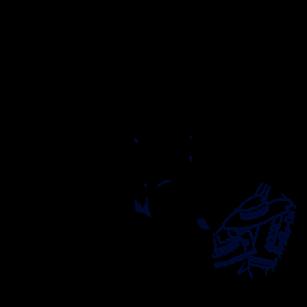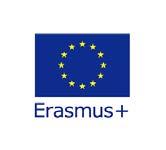Plastic no more
Description
You will start with thinking about what you already know about textile microfibres, then you move to exploring more deeply the issue of microfibre pollution and its impact on the environment and our health. By understanding the connection between your own laundry and life in the ocean, you will get a clear picture of how the materials that make up our clothes can affect the environment. You will read about the possibilities of individuals having an impact on resolving or reducing this problem and at the end you will consider if this is something you can actually influence yourself.
Objective
Objective of this lesson is to explore textile microplastic pollution, its sources and find ways of reducing our own textile microplastic footprint.
After this lesson you will be able to
- identify what a textile microplastic is, and be able to name two main types of textile microplastics - understand how textile microplastics are released and what kind of impact they have on the environment and our health - discuss and explain how we can find solutions ourselves, or possible actions that will help tackle this problem of textile microplastic pollution
Tools and materials
pen and paper
TEXTILE MICROFIBRES:
Textile microfibres are ultra-fine fibres released from our clothing smaller than 5mm.
TEXTILE MICROPLASTIC POLLUTION:
Textile microplastic pollution - pollution caused by textile microplastics
TEXTILE MICROPLASTIC FOOTPRINT:
Textile microplastic footprint - shows how much textile microplastic is contributing to the world’s waste
MICROFIBRE:
Microfibre is defined as a staple fibre or filaments of linear density approximately 1 dtex or less, and above 0.3 dtex.
POLYESTER SHEDDING:
Polyester fibre breaking into small pieces during wear and wash.
We are all aware of the negative impacts of plastic waste on our environment. We are avoiding plastic straws, switching from single-use plastic bags, to textile long-life ones - reducing our plastic waste by trying to shop with “zero waste” principles. But how can we apply this approach to our clothes?
We know that plastic is a large percentage of our clothing - with a production volume of 57 million tonnes, polyester was the most used fibre accounting for 52 percent of the global fibre market in 2020. Do you think that they have any impact on our environment or on our health? If yes, what kind of impact do you think this might be, and how? What is the scale of this impact, and in what areas of our environment?
Write down your thoughts on paper, and we will revise your answers later on in this lesson.
A large percentage of our clothing is made of materials, dependent on oil such as polyester, elastane, acrylic, etc. These materials are made of synthetic fibres.
When we use and look after our clothing - when we wear it, wash it etc - these fibres shed. These shed fibres are called “microfibres”.
Textile microfibres are therefore pieces of plastic smaller than 5mm and they are causing 34.8% of global microplastic pollution.
Photo credit: Fashion Revolution
The yearly consumption of fibre for apparel amounts to 69.7 million tons globally – around 11.0 kg per capita (2010). Synthetic fibres represent almost two-thirds (60.1 %) of this consumption (FAO/ICAC, 2013).
The global yearly consumption of fibres for apparel has steadily increased over the last two decades (+79.3% between 1992 and 2010).
This growth is almost exclusively due to the increased consumption of synthetic fibres with an increase close to 300% (from 16 to 42 million tons) over the same period (FAO/ICAC, 2013).
Photo credit: Fashion Revolution
The majority (62.7%) of synthetic fibres are nowadays consumed in developing economies. In these economies, consumers buy a larger proportion (68.0%) of synthetic textiles than in developed economies (48.2%).
Averaging at 6.1 kg globally, the per capita consumption patterns vary largely between regions: going from 0.7 kg per capita in Africa and 5.7 kg in Asia, and up to 17.8 kg in North America, i.e. a 25 times range (FAO/ICAC, 2011).
These textile microplastics are shed into wastewater when we wash our laundry, and from there they go through sewage treatment facilities to rivers and seas.
Only 65-90% of microplastics are filtered by water treatment facilities - simply because they are so small. But the sewage sludge collected by the WWTPs is often used as a fertiliser replacement, so these fibres end up on farmers’ fields and in our water in any case.
- Carry Somers
There are two types of microplastics:
• Primary microplastics - these microplastics are the ones that enter the environment directly as small particles
• Secondary microplastics - these are microplastics that fragment into smaller pieces once they are already in nature
Photo credit: Eufic
Why should we be worried about such tiny pieces, when we can hardly see them?
Microfibres can absorb chemicals present in the water or sewage sludge, such as polychlorinated biphenyls (PCBs) and carcinogenic Persistent Organic Pollutants (PoPs).
They can also contain chemical additives, from the manufacturing phase of the materials, such as plasticisers (a substance added to improve plasticity and flexibility of a material), flame retardants and antimicrobial agents (a chemical that kills or stops the growth of microorganisms like bacteria).
These chemicals can leach from the fibres into the oceans or even go straight into the bloodstream of animals that ingest the microfibres. Once ingested, microfibres can cause gut blockage, physical injury, changes to oxygen levels in cells in the body, altered feeding behaviour and reduced energy levels, which impacts growth and reproduction.
Due to this, the balance of whole ecosystems can be affected, with the impacts travelling up the food chain and sometimes making their way into the food we eat! It has been suggested that people that eat European bivalves (such as mussels, clams and oysters) can ingest over 11,000 microplastic particles per year.
The impacts of microfibres on the environment can be mitigated, but only with systematic and meaningful change supported by policymakers, brands, industry, NGOs and citizens all working together.
- Sienna Somers, Fashion Revolution
Photo credit: Antarctic Environments Portal
We can do some very simple steps to reduce the negative impact of textile microplastics released from our clothing:
• We can gently hand wash our clothing to avoid abrasive machine washing.
• When we do need to machine-wash, we should use short cycles and low temperatures to minimise microfibre release.
• We can reduce the amount of laundry and washing cycles at home - but how? We can do this by making decisions that start with looking after our clothes; not making them necessarily dirty, airing them after we wear them before hanging or folding back in the closet.
Maybe such a simple consideration such as asking ourselves, does this garment need to be washed, even though I only wore it once?
• We can spot clean - meaning we treat and wash only the dirty spot on our clothing instead washing the whole garment.
• We can use washing machine filters or bags that collect microfibres - in fact campaigners are calling on the British government to make it a legal requirement that all new washing machines are fitted with microplastic filters.
France already has this requirement in legislation: ‘As of January 2025, all new washing machines in France will have to include a filter to stop synthetic clothes from polluting our waterways. This makes France the first country in the world to take legislative steps in the fight against plastic microfibre pollution.’
• Switching to clothing made with natural materials helps to reduce the amount of textile microplastics into water - but it is always important to consider this material’s impact too, for example - what impact do these materials have on soil and water resources?
Reflection
Considering all we have explored about textile microplastics, pause and think - is this issue relatable to you? If yes, how?
Take the notes you made at the beginning of the lesson and revise them. Answer in writing the following questions: Can I as a consumer reduce the textile microfibres in the clothes that I choose to buy? Can I as a customer influence my favourite brands - and how?
Can I as a citizen be a part of the legislative change or be an initiator of this change, or at least an initiator of conversation about it? Are there any ways I can reach out to policy and decision makers and talk to them about it?
And one final question: how do you feel about textile microplastic - do you consider it dangerous, relatively dangerous or completely safe?



















